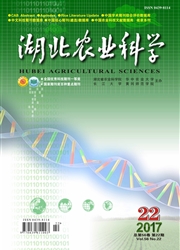

 中文摘要:
中文摘要:
以2003年和2013年的Landsat-7 ETM+与Landsat-8影像数据为数据源,基于Map GIS K9遥感处理系统,通过地表覆被分布空间特征和光谱特征,建立遥感解译标志,采用监督分类和人机交互纠正相结合的方法提取了石臼湖周边土地利用和景观格局信息,并选取相关景观格局指数分析了10年间区域内景观格局的变化。结果表明,石臼湖周边城镇建设用地与林地面积分别增加了32.50%和40.20%,水田面积也稳步增长,水域面积下降比例最大,旱地面积下降绝对值最大,但仍为最主要的土地利用类型,其他用地是面积最小的景观类型。研究区整体破碎度和异质性降低,区域内景观愈来愈受到人类活动的干预,优势景观的斑块连接性下降,破碎化程度加深。区内的各土地利用类型变化趋势各异,所占比例差异较大,但是景观类型的多样性和空间结构复杂性能促进其稳定的发展。
 英文摘要:
英文摘要:
Based on Map GIS K9 remote sensing processing system and the analysis of land use data obtained from 2 Landsat-7 ETM + and Landsat-8 image in the years of 2003 and 2013, remote sensing interpretations were established through spatial distribution characteristics and spectral characteristics of land cover. The hierarchical classification method and the method combining supervised classification with the artificial visual interpretation were applied to extract landscape class information of land use in the Shijiu Lake surrounding area. Further more, related landscape indices were selected for analysis of changes in the regional landscape pattern over 10 years. The results are as follows. Urban construction land and forest area was increased by 32.50% and 40.20% in the Shijiu Lake surrounding area while paddy area was also steadily growing. The water area had the largest decline percentage while dryland area had the largest absolute decline, which was still the main land use types. The landscape type of the other land had the smallest area. The fragmentation and heterogeneity of studied area reduced as the regional landscape has been more and more intervented by human activities. The dominant landscape patches connectivity decreased; and fragmentation deepened. The ratio of different land use type in the studied area deffered;and the development trends are also different. Landscape diversity and complexity of spatial structure can promote the stablility of development.
 同期刊论文项目
同期刊论文项目
 同项目期刊论文
同项目期刊论文
 期刊信息
期刊信息
